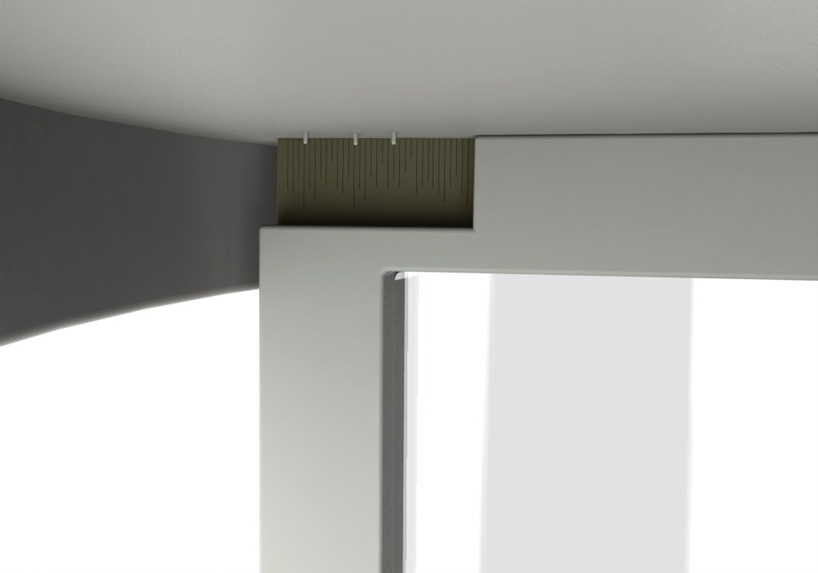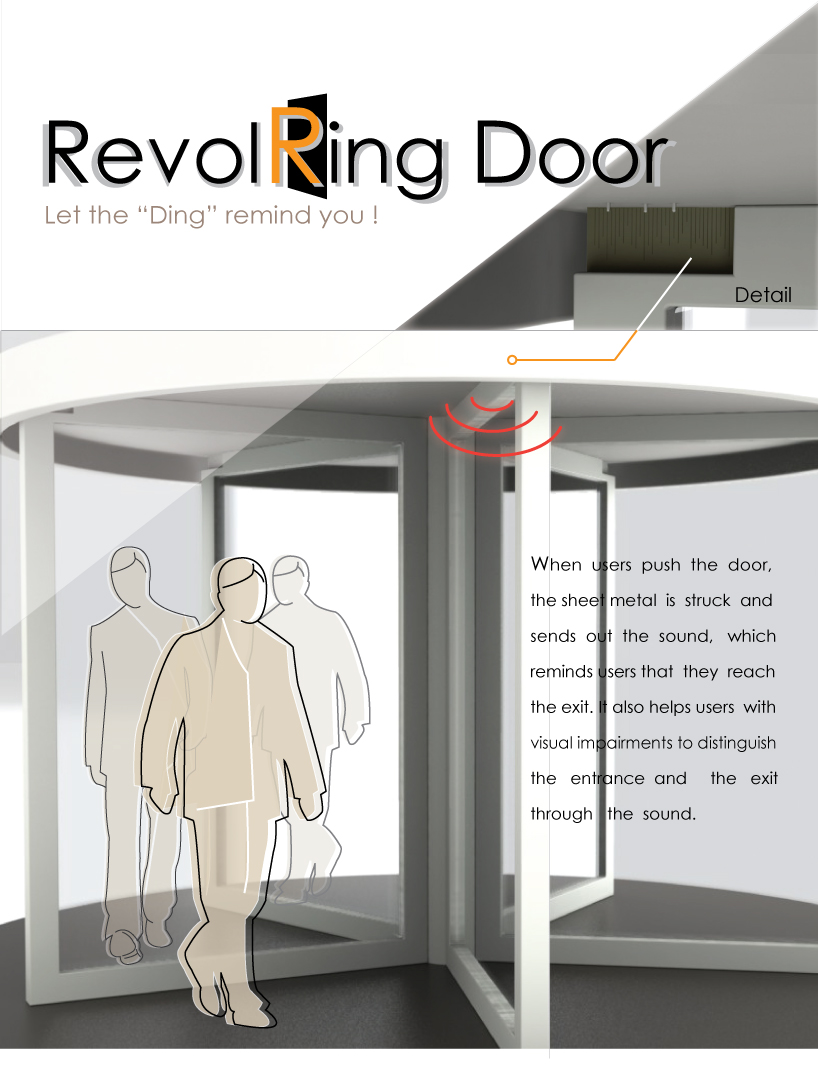
revolring door by Huiyu Lai from taiwan
designer's own words:
The elements we interpret our MOTION. The MOTIONs are made in the process of playing the instruments. Through the vibration and beating from different instruments, the melody comes out. We recorded the movements the performers did when they played the instruments, and the movements could be categorized into four kinds: strum, rub, tap and beat. Among these four kinds of movements, we chose the strum to construct our idea. When users push the door, the sheet metal is struck and sends out the sound, which reminds users that they reach the exit. It also helps users with visual impairments to distinguish the entrance and the exit through the sound.
The elements we interpret our MOTION. The MOTIONs are made in the process of playing the instruments. Through the vibration and beating from different instruments, the melody comes out. They may be the vibration of the cords on the viola, the vibration of the vocal cords, and the vibration of the drumhead.  The movements the performers do when they play the instruments. The movements could be categorized into four kinds: strum, rub, tap and beat. [jwplayer config=”mplayer” width=”818px” height=”600px” file=”https://static.designboom.com/wp-content/compsub/368037/2012-12-28/video_1_1356708279_f142fdc2e1959711c9cab3c4aa572eed.mp4″] video
The movements the performers do when they play the instruments. The movements could be categorized into four kinds: strum, rub, tap and beat. [jwplayer config=”mplayer” width=”818px” height=”600px” file=”https://static.designboom.com/wp-content/compsub/368037/2012-12-28/video_1_1356708279_f142fdc2e1959711c9cab3c4aa572eed.mp4″] video
 When users push the door, the sheet metal is struck and sends out the sound, which reminds users that they reach the exit. It also helps users with visual impairments to distinguish the entrance and the exit through the sound.
When users push the door, the sheet metal is struck and sends out the sound, which reminds users that they reach the exit. It also helps users with visual impairments to distinguish the entrance and the exit through the sound.  The sheet metal is struck when users push the door, and sends out the sound.
The sheet metal is struck when users push the door, and sends out the sound.  The panel [jwplayer config=”mplayer” width=”818px” height=”600px” file=”https://static.designboom.com/wp-content/compsub/368037/2012-12-28/video_2_1356708279_88d4b34ca61bd72091580792a6eb2c83.mp4″] video
The panel [jwplayer config=”mplayer” width=”818px” height=”600px” file=”https://static.designboom.com/wp-content/compsub/368037/2012-12-28/video_2_1356708279_88d4b34ca61bd72091580792a6eb2c83.mp4″] video